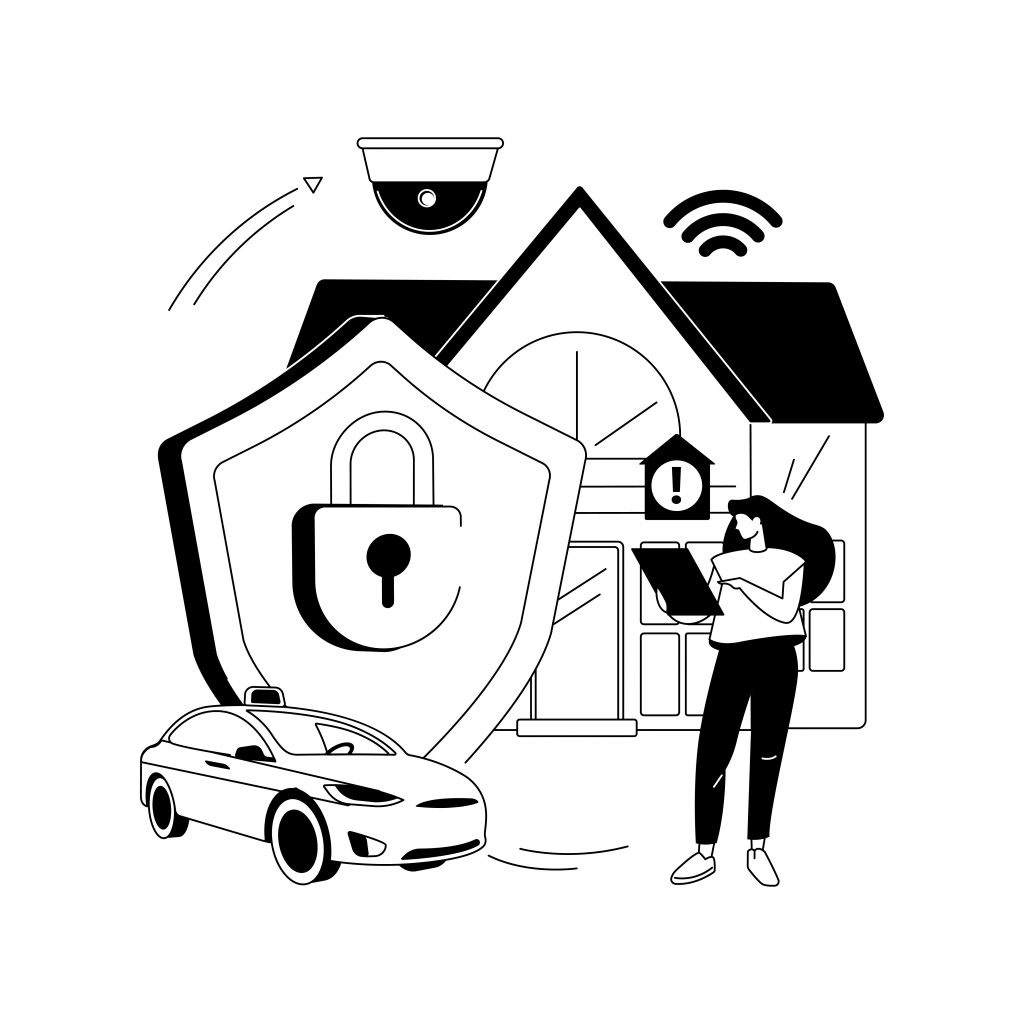Among the most transformative technologies of the digital age is the Internet of Things (IoT), which is fundamentally changing how we live, work, play and even care for our health. From smart home appliances to healthcare devices and industrial automation, urban infrastructure to integrated transportation systems, IoT networks are creating greater connectivity in more facets of our lives than we would ever have imagined. While this connectivity promises great convenience and efficiency, the growth of IoT systems also brings multiple security challenges that threaten to undermine the gains that IoT promises. In what follows, I’ll identify and discuss the threats and security implications of the IoT, and outline how to deal with these challenges.
The expanding IoT landscape
Needless to say, the IoT is a huge and diverse area, ranging from ‘simple’ stuff like smart light bulbs all the way to smart autonomous vehicles, with almost any other technological artefact being considered ‘smart’ as well under certain circumstances. According to Statista, the forecast estimates the number of IoT devices at more than 29 billion by 2030. This number underscores the scale upon which the IoT has been rapidly spreading in all walks of life. And it would continue on this upward trend for the foreseeable future. The downside of all this is that it substantially increases the overall attack surface area for malicious cyber intrusions, making security not only a societal necessity but also a very lucrative investment.
1. Inadequate security protocols
One of the pressing problems in the development of IoT technology is the implementation of weak security protocols. With IoT devices already finding increasing use across a spectrum of application settings, from smart home systems to wearable health monitors and smart-city sensors, not to mention their integration with industrial operations, the issues related to weak security are simply too pressing to ignore. Multiple facets of IoT device implementation combine to make devices highly susceptible to cyber threats.
The race to market
The fierce level of competition in the IoT market sees manufacturers frequently keen to get ahead of the trend and rush new products to market, causing security to be seen as a ‘bolt-on’, often pushed to the requirements of last resort after functionality, user experience and cost efficiencies have been achieved. The lack of robust security features leads in many cases to devices being released on the market utilising basic, even outdated, protocols, leaving devices and users highly vulnerable to cybercriminals’ attacks.
Standardisation issues
Because of the large number of manufacturers active in the IoT ecosystem, compared to the relatively small number of first-tier firms building computers or smartphones, a lack of standardisation in security protocols is more common when looking at IoT devices across the board than in more mature computing ecosystems. Sensors and other simple devices are produced by different manufacturers, and they communicate with more complex machinery using different security protocols. As a result, even within the same system, different devices have to use a variety of security standards. As currently implemented, the lack of commonly accepted security protocols means that IoT systems must use proprietary or non-secure communications and this creates a lot of opportunities for interception and tampering with data transmissions.
Resource constraints
Often, power and computational limitations mean that they don’t incorporate more intense forms of security. Encryption is a classic example: the extra computational load is likely too high for embedded low-power IoT devices. Instead, manufacturers are forced to use weaker security protocols, or in some cases not to use encryption at all. Eavesdropping and data tampering have become child’s play for attackers.
The complexity of IoT ecosystems
The challenge is exacerbated by the fact that IoT ecosystems consist of many layers beyond the devices themselves: the relevant networks connect the devices, while the IoT ‘platform’ provides the security backbone. Thus, there are multiple opportunities for compromise. For example, an insecure IoT device could be co-opted and exploited to gain access to the network connected to it, from which it can then launch an attack against less compromised systems.
Addressing the challenge
- Industry-wide security standards: Developing and adopting industry-wide security standards can provide a baseline for IoT security, ensuring that devices are equipped with robust protection mechanisms from the outset
- Secure development lifecycle: Manufacturers must integrate security considerations throughout the device development lifecycle, from initial design to deployment and beyond. This includes regular security assessments and updates to address emerging threats
- Advanced encryption: Despite resource constraints, leveraging advanced encryption techniques and secure communication protocols is essential. Innovative solutions, such as lightweight cryptography, can offer protection without exceeding the resource limits of IoT devices
- Consumer education: Educating consumers about the importance of security in IoT devices and how to ensure their devices are secure can also play a crucial role in enhancing the overall security posture of IoT ecosystems


2. Limited update mechanisms
Perhaps the most challenging of the problems is related to the limited update mechanisms of IoT systems. Like many other related concerns regarding poorly enforced security protocols, there are a number of issues that, taken together, make it difficult to guarantee updates on devices as time goes by.
Design priorities and cost consideration
Under economic pressures from rapid innovation and fierce competition, manufacturers tend to optimise for features that improve the user experience and reduce costs rather than make devices Internet-connected and capable of being updated with new security patches or software upgrades. With this in mind, security vendors prefer amateurs over professionals, with some even incentivising targets through initiatives such as bug bounty programmes.
Heterogeneity and standardisation gaps
The incredible variety of devices comprising the IoT is accompanied by a corresponding, and equally problematic, variety of manufacturers, each of which has different directions, interfaces and protocols dictating how a device can be updated. Compared with the comparatively uniform update process that most PCs and smartphones address, the ‘obscure’ UX (update experience) will be the ‘standard’ of the IoT. Security updates that benefit or protect machines are sometimes difficult to deploy, even when the need is unambiguous.
Resource limitations
A second issue is that many IoT devices are very data-inefficient; they might have very little computing power to process updates, and power constraints don’t allow a continuous online connection. This is a practical constraint, not just a technical one: devices are really small, battery-powered appliances that need to be affordable.
Network and accessibility issues
Not all IoT devices are operated from connected homes or offices with Internet access; some are deployed in areas with limited or intermittent network connectivity. For many industrial or remote devices, network access may be an afterthought or even an option removed at the time of use.
Addressing challenge
- Design for future-proofing: Manufacturers should design devices with the capability to receive updates, considering not just current but future security needs. This may involve including more robust computational resources or designing modular systems that can be physically updated.
- Embrace standardisation: Industry-wide efforts to standardise update processes can reduce the complexity and cost of maintaining IoT devices. Such standards can also facilitate the deployment of security updates across diverse devices and ecosystems.
- Innovate in update delivery: Exploring innovative methods to deliver updates, such as using low-bandwidth solutions or leveraging peer-to-peer update distribution networks, can help reach devices in challenging environments.
- Educate and engage users: Finally, educating users on the importance of updates and providing simple, clear instructions for updating devices can improve compliance and security across the IoT landscape.


3. Data privacy issues
IoT has emerged as perhaps one of the most important pillars of innovation today, integrated into almost all aspects of our daily lives and industry. It has brought a whole slew of data privacy problems that have left a complex privacy landscape with no clear paths for stakeholders. IoT devices generate large amounts of data, which is highly personal or sensitive. The processing, storage and transfer of that data leave privacy exposed to numerous principled challenges that are exacerbated by the specific features of the IoT ecosystem.
Massive data collection
The nature and scale of the data produced by even a modest array of IoT devices (our habits, our health, our whereabouts, our habits when we’re out of the home, our activities when afar, even our voices) raise important questions about how data is collected, exactly what is collected, what that data is used for, and who’s looking at it.
Inadequate consent mechanisms
Many times, users do not know about the extent of data collection or do not have meaningful choices about it. Consent mechanisms, when they exist, can be buried in the fine print or fail to provide granular choices about data-sharing options.
Lack of transparency and control
Users do not have visibility about what is recorded, how it is stored, with whom it is shared, and for what purposes. The very absence of control over personal information inherently diminishes privacy.
Data security vs. data privacy
Although they go hand in hand, data security (ensuring that data are not compromised by third-party snooping) and data privacy (ensuring that data collected are used in a way that users authorise) are separate challenges. An IoT gadget could be secure but still unprivately use data in ways users have not consented to.
Interconnected devices and data sharing
Because IoT devices are part of an interlinked network, data gathered by one device might spread across platforms and be disclosed to third parties, including manufacturers and advertisers. This privacy risk discourages many people from using the Internet of Things.
Addressing the challenge
- Enhance transparency and consent: Implementing clear, concise and accessible privacy policies and consent mechanisms can empower users to make informed decisions about their data.
- Adopt privacy by design principles: Integrating privacy considerations into the design and development of IoT devices and systems can ensure that privacy protections are built in from the outset.
- Minimise data collection and retention: Limiting the collection of data to what is strictly necessary for the functionality of the device and minimising data retention times can reduce privacy risks.
- Enable user control: Providing users with tools to manage their data, including access to the data collected, options to limit sharing and the ability to delete data, can enhance privacy.
- Regulatory compliance and best practises: Adhering to regulatory requirements and industry best practises for data privacy can help organisations navigate the complex privacy landscape and build trust with users.


4. Network security weaknesses
Consumer electronics like smart fridges or fitness trackers, or sensors for industry and smart-city infrastructure, are often wired together so that they can cross-reference data or share functionality. Networking these devices is both the backbone of the IoT’s utility and a provocative opportunity for cyberattacks.
Insecure network interfaces
Notably, many IoT devices have internet-connected network interfaces (e.g. Wi-Fi, Bluetooth or cellular). These interfaces can serve as an easy point of entry for attackers if not properly secured.
Lack of network segmentation
More often than not, they’re simply put on a network without any segmentation, meaning that once an attacker gains a foothold through one of these IoT devices, they could gain access to the rest, moving laterally around the network and getting into other devices and sensitive systems.
Insufficient access controls
Weak authentication and authorisation are also common in IoT devices, such as default or easily guessable passwords, lack of two-factor authentication and poorly managed access rights, all of which can result in unauthorised access.
Vulnerability to eavesdropping and man-in-the-middle attacks
When information is transmitted in unencrypted form, the network can be easily monitored, exposing the insecure IoT device and its communications to observation and interference. As a result, an attacker can gain access to the device and its private data, or even control it.
Addressing the challenge
- Enhanced security protocols for network interfaces: Implementing strong encryption, secure authentication methods, and robust access control mechanisms can significantly reduce the risk of unauthorised access and data breaches.
- Network segmentation and zoning: By segmenting networks and applying strict controls on communication between segments, organisations can limit the potential for lateral movement by attackers, isolating breaches to containable segments.
- Regular security audits and monitoring: Conducting regular security audits of IoT devices and networks, coupled with continuous monitoring for unusual activities, can help in the early detection and remediation of security threats.
- Security by design: Incorporating security considerations into the design and development phase of IoT devices, including the implementation of secure software development practises, can minimise vulnerabilities from the outset.
- Education and awareness: Educating stakeholders, from device manufacturers to end-users, about the risks and best practises for network security can foster a culture of security mindfulness.
To sum up, the time to confront the staggering sea of security challenges posed by IoT is now. As we approach the dawn of an IoT era introducing new paradigms of technological progress and societal change, addressing the challenges associated with the very essence of IoT security will not only ensure its success but have to become its very essence. Whether it’s setting high security standards from the outset in the manufacturing processes, maintaining secure update mechanisms, protecting personal data that’s very privacy sensitive, or securing the myriad IoT networks, I can see only one road forward. And that’s a collaborative one, where better cooperation from manufacturers, developers, regulators and, of course, IoT users will all combine to bring about the security we seek.
Comment on this article via X: @IoTNow_
- SEO Powered Content & PR Distribution. Get Amplified Today.
- PlatoData.Network Vertical Generative Ai. Empower Yourself. Access Here.
- PlatoAiStream. Web3 Intelligence. Knowledge Amplified. Access Here.
- PlatoESG. Carbon, CleanTech, Energy, Environment, Solar, Waste Management. Access Here.
- PlatoHealth. Biotech and Clinical Trials Intelligence. Access Here.
- Source: https://www.iot-now.com/2024/03/26/143458-security-concerns-in-iot-addressing-the-challenges-head-on/
- :has
- :is
- :not
- :where
- $UP
- 29
- 5
- 6
- 8
- a
- ability
- About
- about IT
- absence
- ABSTRACT
- accepted
- access
- accessibility
- accessible
- accompanied
- According
- achieved
- across
- active
- activities
- address
- addressing
- adhering
- Adopting
- advanced
- advertisers
- afar
- affordable
- After
- against
- age
- ahead
- All
- allow
- almost
- already
- also
- amounts
- an
- and
- any
- appliances
- Application
- Applying
- approach
- ARE
- AREA
- areas
- around
- Array
- article
- AS
- aspects
- assessments
- associated
- At
- attack
- attacker
- attackers
- Attacks
- audits
- Authentication
- authorisation
- Automation
- autonomous
- autonomous vehicles
- Backbone
- background
- Baseline
- basic
- BE
- become
- been
- being
- benefit
- BEST
- Better
- between
- Beyond
- Billion
- biometric
- bluetooth
- board
- both
- bounty
- breaches
- bring
- Brings
- brought
- Bug
- bug bounty
- build
- build trust
- Building
- built
- bulbs
- but
- by
- CAN
- capability
- capable
- care
- cases
- causing
- cellular
- certain
- challenge
- challenges
- challenging
- change
- changing
- choices
- circumstances
- classic
- clear
- client
- collaborative
- collected
- collection
- COM
- combine
- Common
- commonly
- communicate
- Communication
- Communications
- comparatively
- compared
- competition
- complex
- complexity
- compliance
- comprising
- compromise
- Compromised
- computational
- computers
- computing
- computing power
- concept
- Concerns
- concise
- conducting
- Connect
- connected
- connection
- Connectivity
- consent
- considerations
- considered
- considering
- consist
- constraint
- constraints
- Consumers
- continue
- continuous
- control
- controls
- convenience
- cooperation
- Corresponding
- Cost
- Costs
- could
- coupled
- course
- creates
- Creating
- crucial
- cryptography
- Culture
- Current
- Currently
- cyber
- daily
- data
- Data Breaches
- data privacy
- data tampering
- deal
- decisions
- Default
- delete
- deliver
- deploy
- deployed
- deployment
- Design
- designing
- Despite
- Detection
- developers
- developing
- Development
- device
- Devices
- different
- difficult
- digital
- digital age
- directions
- discuss
- distribution
- diverse
- do
- Dont
- downside
- e
- each
- Early
- easily
- easy
- Economic
- ecosystem
- Ecosystems
- educating
- efficiencies
- efficiency
- efforts
- Electronics
- embedded
- emerged
- emerging
- empower
- encryption
- enforced
- engage
- enhance
- enhancing
- ensure
- ensuring
- entry
- environments
- equally
- equipped
- Era
- essence
- essential
- estimates
- Ether (ETH)
- Even
- EVER
- exactly
- example
- exceeding
- exist
- expanding
- experience
- exploited
- Exploring
- exposed
- extent
- extra
- facets
- facilitate
- fact
- FAIL
- Features
- fierce
- Finally
- finding
- fine
- fingerprint
- firms
- fitness
- follows
- foothold
- For
- forced
- Forecast
- foreseeable
- form
- forms
- Forward
- Foster
- frequently
- from
- functionality
- fundamentally
- future
- Gain
- Gains
- gathered
- generate
- get
- getting
- Go
- Goes
- granular
- great
- greater
- Growth
- guarantee
- habits
- hand
- Have
- Health
- healthcare
- help
- High
- highly
- Home
- Homes
- House
- How
- How To
- HTTPS
- huge
- i
- I’LL
- identify
- if
- ignore
- imagined
- implementation
- implemented
- implementing
- implications
- importance
- important
- improve
- in
- includes
- Including
- incorporate
- incorporating
- Increases
- increasing
- incredible
- industrial
- industrial automation
- industry
- information
- informed
- Infrastructure
- inherently
- initial
- initiatives
- Innovation
- innovative
- innovative technology
- insecure
- instead
- instructions
- integrate
- integrated
- Integrating
- integration
- intense
- interfaces
- interference
- Internet
- internet access
- internet of things
- internet-connected
- into
- introducing
- investment
- involve
- iot
- IoT Device
- iot devices
- issue
- issues
- IT
- ITS
- jpg
- just
- Keen
- Know
- Lack
- landscape
- large
- Last
- launch
- layers
- Leads
- Leave
- leaving
- left
- less
- Level
- leveraging
- Life
- lifecycle
- light
- lightweight
- like
- likely
- LIMIT
- limitations
- Limited
- limiting
- limits
- little
- live
- Lives
- load
- looking
- Lot
- lucrative
- machinery
- Machines
- maintaining
- make
- Making
- malicious
- manage
- managed
- management
- Manufacturers
- manufacturing
- many
- many people
- Market
- mature
- max-width
- May..
- mean
- meaning
- meaningful
- means
- mechanisms
- mention
- methods
- might
- mind
- Mindfulness
- minimise
- modest
- modular
- monitored
- monitoring
- monitors
- more
- most
- movement
- moving
- multiple
- must
- myriad
- Nature
- Navigate
- necessary
- necessity
- Need
- needs
- network
- Network Access
- Network Security
- networking
- networks
- New
- new products
- news
- no
- now
- number
- numerous
- observation
- of
- offer
- offices
- often
- on
- once
- ONE
- online
- only
- operated
- Operations
- opportunities
- Opportunity
- optimal
- optimise
- Option
- Options
- or
- Organisations
- Other
- our
- out
- outdated
- outline
- over
- overall
- paradigms
- part
- parties
- Passwords
- Patches
- paths
- PCs
- peer to peer
- People
- perhaps
- personal
- personal data
- personal information
- phase
- Physically
- pillars
- Platforms
- plato
- Plato Data Intelligence
- PlatoData
- Play
- Play For
- Point
- policies
- posed
- potential
- power
- Practical
- prefer
- pressing
- pressures
- privacy
- private
- problems
- process
- processes
- processing
- Produced
- Product
- Products
- professionals
- programmes
- Progress
- project
- promises
- properly
- proprietary
- protect
- protecting
- protection
- protocols
- provide
- provides
- providing
- purposes
- pushed
- put
- Questions
- Race
- raise
- ranging
- rapid
- rapidly
- rather
- reach
- really
- receive
- recorded
- reduce
- regarding
- regular
- Regulators
- regulatory
- related
- relatively
- released
- relevant
- remediation
- Remix
- remote
- Removed
- Reports
- Requirements
- Resort
- resource
- Resources
- REST
- result
- retention
- rights
- Risk
- risks
- road
- robust
- Role
- rush
- same
- say
- Scale
- scanning
- Screen
- SEA
- Second
- secure
- Secured
- securing
- security
- Security audits
- security systems
- Security threats
- security updates
- see
- Seek
- seen
- sees
- segmentation
- segments
- selection
- sensitive
- sensors
- separate
- serve
- setting
- settings
- Share
- shared
- sharing
- should
- significantly
- Simple
- simply
- small
- smart
- Smart home
- smart speaker
- smartphones
- snooping
- So
- societal
- Software
- software development
- Solutions
- some
- sometimes
- Speaker
- specific
- Spectrum
- spread
- Spreading
- staggering
- stakeholders
- standards
- Still
- storage
- stored
- strict
- strictly
- strong
- stuff
- substantially
- success
- such
- sum
- Surface
- surveillance
- susceptible
- system
- Systems
- Systems Design
- taken
- targets
- Technical
- techniques
- technological
- Technologies
- Technology
- tend
- than
- that
- The
- the security
- their
- themselves
- then
- There.
- These
- they
- things
- Third
- third parties
- third-party
- this
- threaten
- threats
- Through
- throughout
- Thus
- time
- times
- to
- today
- together
- too
- tools
- Trackers
- transfer
- transformative
- Transparency
- transportation
- Trend
- Trust
- two-factor authentication
- under
- Undermine
- underscores
- unusual
- Update
- updated
- Updates
- updating
- upgrades
- upon
- upward
- urban
- use
- used
- User
- User Experience
- users
- using
- utility
- ux
- variety
- vector
- Vehicles
- vendors
- very
- via
- Video
- video surveillance
- Virtual
- visibility
- VOICES
- vs
- Vulnerabilities
- Vulnerable
- walks
- Way..
- ways
- we
- weaker
- wearable
- WELL
- What
- What is
- when
- whether
- which
- while
- whole
- whom
- Wi-fi
- will
- with
- within
- without
- Work
- would
- writer
- X
- zephyrnet













